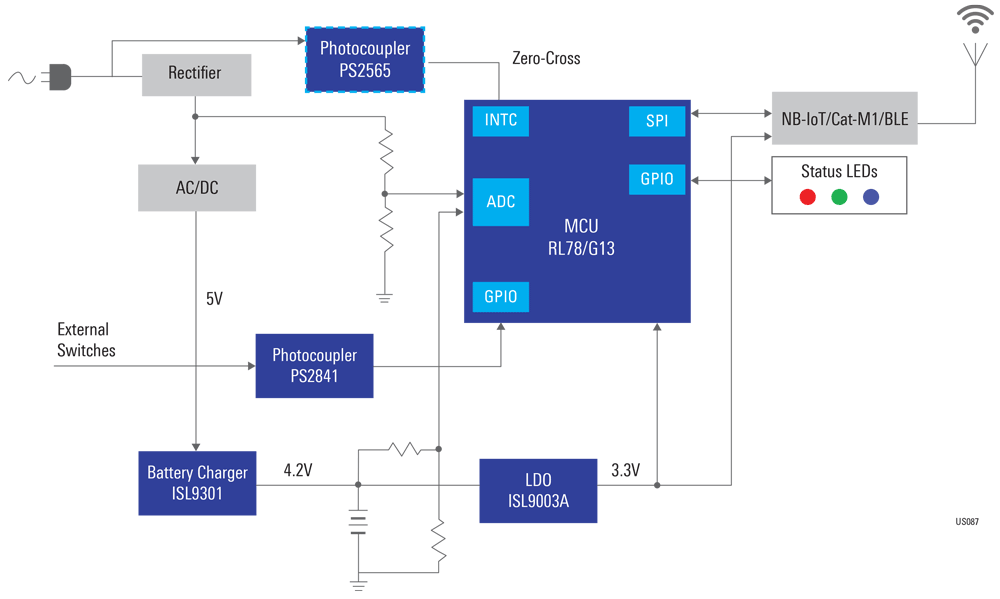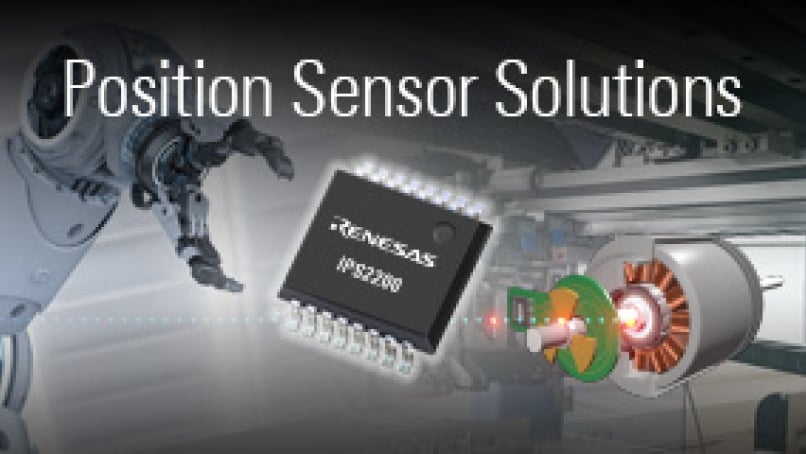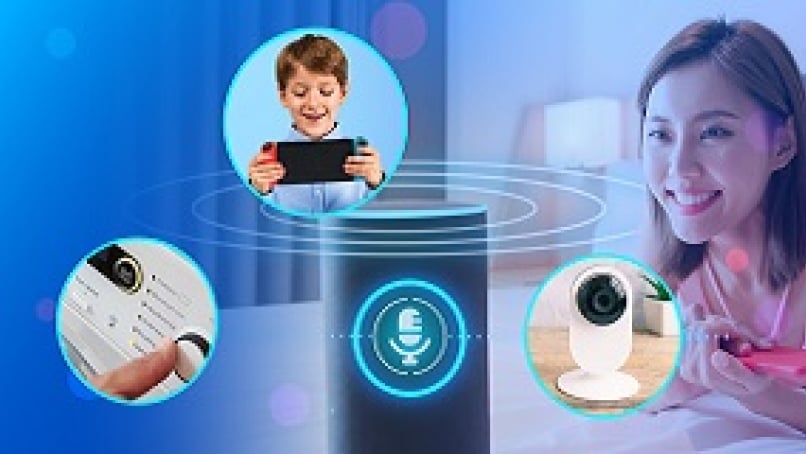As you wake up and head to the kitchen for your morning cup of coffee, you notice the microwave and stove time displays blinking at you. Looks like the power went out. Time to reset the clocks. Power outages are a minor inconvenience to some, but for many people and businesses, it is critical to have a remote alert in such an event. Many times, when the power goes down, Wi-Fi loses connectivity due to loss of infrastructure within the home or business. NB-IoT/Cat-M1 combined with rechargeable batteries can solve this issue and notify home and business owners of a main power loss.
At the heart of a remote power monitor for critical applications is a low power microcontroller (MCU) capable of detecting the main power and key signals, as well as communicating to the NB-IoT/Cat-M1 module. One such device is the RL78/G13 MCU, which balances the industry's lowest level of consumption current (66 μA/MHz) with high performance (43.2 DMIPS, 32 MHz), an on-chip oscillator, data flash, A/D converter, and more. Optional components around the MCU include isolators to monitor external signals, such as generator relays or the main power line sensing. Renesas carries numerous high voltage isolation devices, including the PS2841 quad photocoupler that features a minimized mounting area while providing a high isolation voltage of 1500VRMS for external signals, and the PS2565, which provides an AC input response with 5000 VRMS isolation for zero-cross timing and AC power detection.
To maintain a system that is constantly on, power for the MCU comes off the main line when it is available. The system utilizes a high voltage converter to produce a 5V rail and an LDO for a clean 3.3V rail. The 5V rail also provides power to charge the backup battery using a single-cell battery charger while the main power is available. In the event of a power outage, the whole system is powered off the battery and is capable of sending out alerts.
Having the backup battery in series with the current flow results in unnecessary power cycling that reduces the battery lifespan. To avoid constantly charging and discharging the battery, a battery charger with dual output paths is ideal. This allows the charge to terminate when the battery is full, while also continuing to supply the system with the input source. Furthermore, it allows the system to immediately operate even with a completely discharged battery. The ISL9301 single-cell Li-ion battery charger provides the dual power path management necessary to achieve this functionality, and also features a 28V input rating and over-voltage protection to eliminate the need for additional protection circuitry. The ISL9003A LDO creates a low noise 3.3V rail whether powered from the battery or the high voltage converter thanks to its high PSRR.
From businesses dependent on refrigeration and climate control to home health and elderly care, particularly in hotter or colder climates, power outages can have negative effects to both health and finances. Renesas’ power monitoring reference design for critical applications can provide peace of mind and intelligent data when the power goes out.
Figure 1 – Critical Power Monitoring System block diagram:

Visit the winning combinations page to see more solutions that help our customers accelerate their designs to get to market faster.



